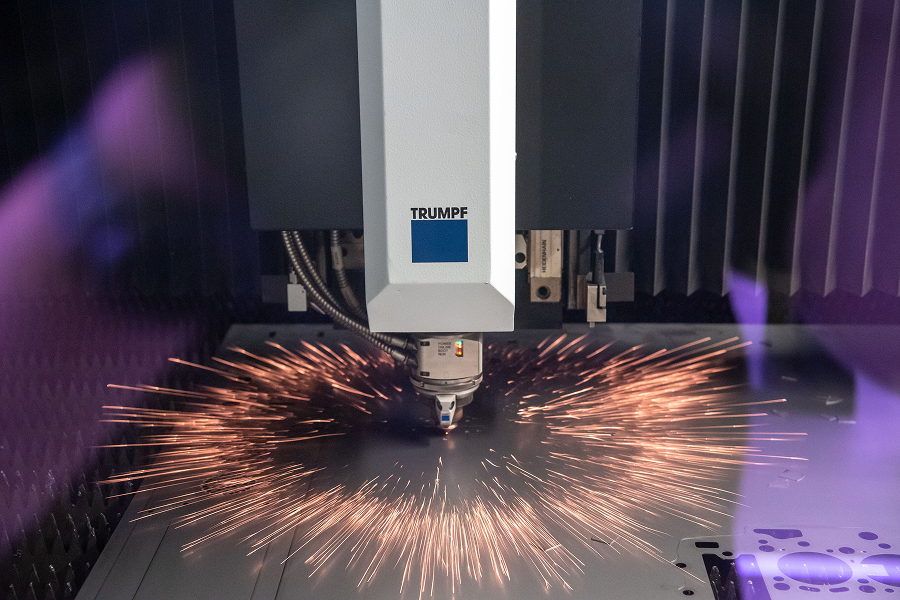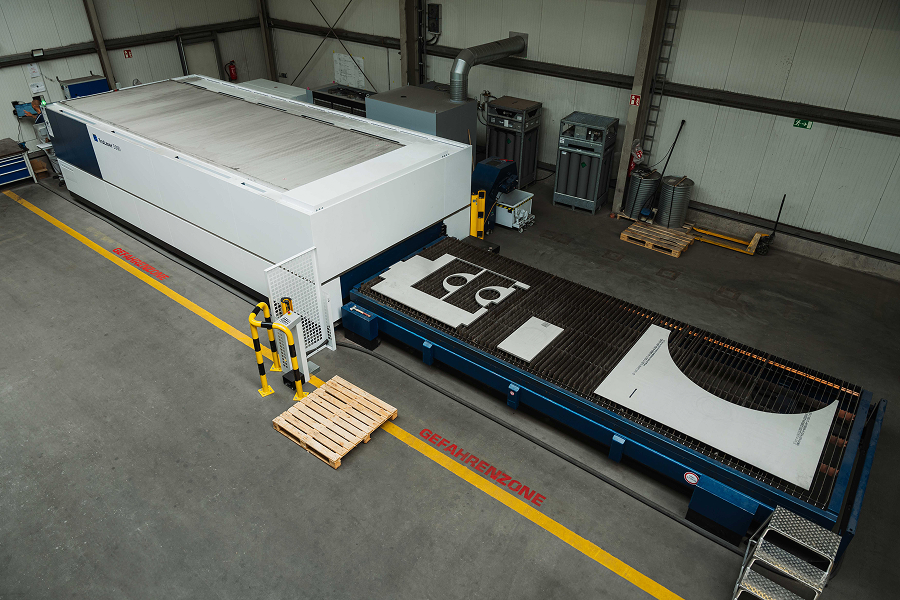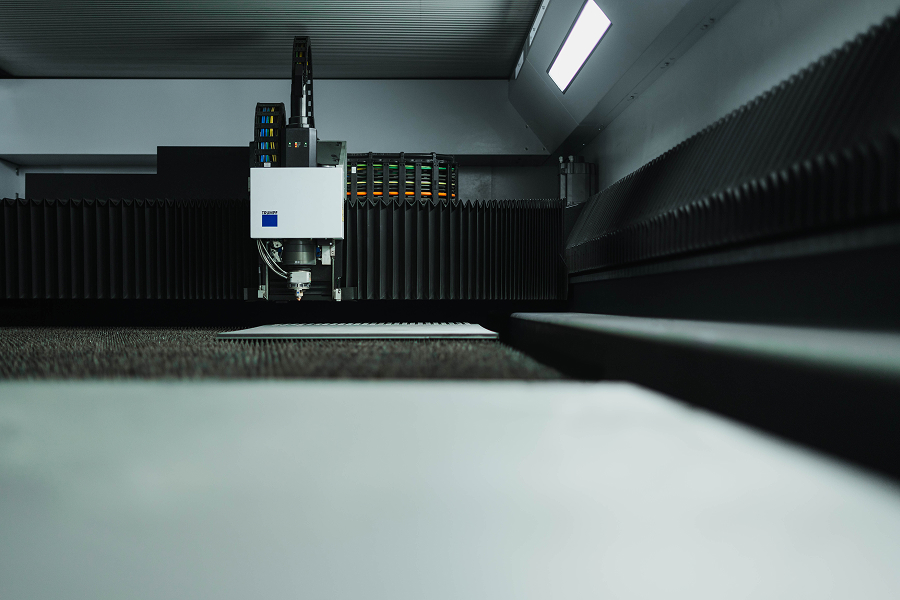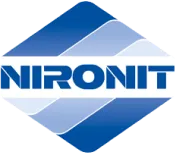Laser cutting at Nironit
Laser cutting at NIRONIT stands for maximum precision and reproducible results, ideal for demanding applications. We provide you with components from a single source, which can be seamlessly integrated into your manufacturing processes and with short delivery times, so that you receive components that can be used immediately. In doing so, you benefit from NIRONIT's comprehensive material expertise and our wide range of stainless steels and special qualities.




Stainless steel laser cuts — precise up to 40 mm (24 kW)
NIRONIT cuts stainless steel sheets quickly, cleanly and reliably.
Format up to 2000 × 6000 mm
thicknesses 0.5—40 mm, laser power 24 kW
Delivery time: 8-10 working days
express by appointment

materials
Stainless steels from standard to special materials
1.4301/1.4307, 1.4016, 1.4404/1.4571, 1.4542 (PH), duplex/super duplex - 1.4462, 1.4162, 1.4362, 1.4410
High-alloyed austenitic grades - 1.4539, 1.4547, 1.4529
Nickel-based alloys upon request
performance data
- Sheet thicknesses: 0.5—40 mm
- Maximum size: 2000 × 6000 mm
- Laser power: 24 kW TruDisk 24001
Image source: TRUMPF SE + Co. KG (Holding), Ditzingen
Quality & process
- Laser cutting (N₂): fast processing, tight tolerances, metallic bare to silky matt cut surfaces — particularly economical up to a material thickness of 25 mm.
- Laser cutting (O2, > 25 mm): higher heat input, tarnish/oxide skin possible, more rework depending on requirements.
- Duplex/special materials: tougher → lower cutting speeds, matte edges are normal When absolute Oxide-free and maximally accurate at very thick If sheet metal is required, we are happy to test the high-performance alternative Waterjet. plasma We recommend cuts for coarser and thicker cuts of 40 mm or more, if some rework is still required.
Image source: TRUMPF SE + Co. KG (Holding), Ditzingen


Delicate contours
- Min. hole diameter ≥ 1.0× Material thickness (better 1.2×)
- Min. web width ≥ 1.0× material thickness
- Engraving/writing is easily possible
processing
Roll straightening · Deburring · Edge rounding · Chamfering/Edge milling · Edging · Milling/Drilling · Protective film · Marking
Data & transfer
- file formats: DXF/DWG (preferred), alternatively STEP/IGES
- Please note: Clearly identify closed contours, no double lines, tolerances/chamfers/threads/fits.
Clear notes
- Surface appearance and edge quality depend on Material, thickness and process gas off.
- With > 25mm taking conicity and ridge Yes; we agree with quality/test features in advance Compulsory from.
- Visible parts with Tarnish-free Please mark before ordering — we will then select the appropriate process.
Image source: TRUMPF SE + Co. KG (Holding), Ditzingen

General
tolerances
thickness
up to width/length 100
width/length
100 - 1000
width/length
1000 - 2000
width/length
2000 - 6000
Comparison: Laser vs. Waterjet vs. Plasma
Lasers: fast and precise in thin to medium sheet thicknesses, tight tolerances, narrow cutting gap; thermal influence is present but low.
Waterjet: no heat-affected zone, maximum dimensional accuracy, ready for immediate installation; slower cutting speed and therefore more expensive than plasma and laser.
plasma: economical for very large thicknesses, but coarser tolerances and greater burr/heat influence.
Our practical tip: Laser, water jet or plasma — every process has its strengths.
The choice of cutting process depends heavily on your needs.
lasers Is ideal when it's on high speed, precision and tight tolerances applies to thin to medium sheet thicknesses.
Waterjet is suitable if oxide-free cut edges, maximum dimensional accuracy and no thermal influence are decisive.
plasma Is the economic choice for Material thicknesses >30mm when slight reductions in tolerances and cut quality are acceptable.
Start your request now
Send drawing and requirements —
We make a binding assessment of feasibility, quality, price and deadline.

FAQ
Wir streben kurze Lieferzeiten an. Eine Expresslieferung ist auf Anfrage immer möglich.
Selbstverständlich. Wir bieten umfassende Anarbeitungsleistungen wie Walzenrichten, Entgraten, Kantenverrunden oder Kantenfräsen an, um Ihnen montagefertige Bauteile aus einer Hand zu liefern.
Ja, unsere moderne Laseranlage ist speziell für das präzise Schneiden komplexer und filigraner Konturen ausgelegt, um den hohen Anforderungen des Maschinenbaus gerecht zu werden.
Laserschneiden bietet besonders bei dünnen bis mittleren Blechen eine sehr hohe Geschwindigkeit und Präzision mit minimalem Wärmeeinfluss. Wasserstrahlschneiden ist ideal für maximale Präzision ohne jeglichen thermischen Einfluss, während Plasmaschneiden für dicke Materialien und Kosteneffizienz bei geringeren Präzisionsanforderungen geeignet ist. Unsere Tabelle oben bietet einen detaillierten Vergleich.
Unsere Laseranlage kann Bleche von [X] mm bis zu [Y] mm Dicke präzise schneiden.
Wir bearbeiten ein breites Spektrum an Edelstählen, von Standardqualitäten wie 1.4301 bis zu hochlegierten Sonderwerkstoffen wie 1.4539 oder 1.4547. Bei speziellen Anforderungen bitten wir Sie um direkte Kontaktaufnahme.



.webp)
